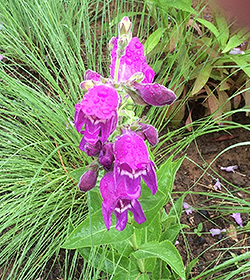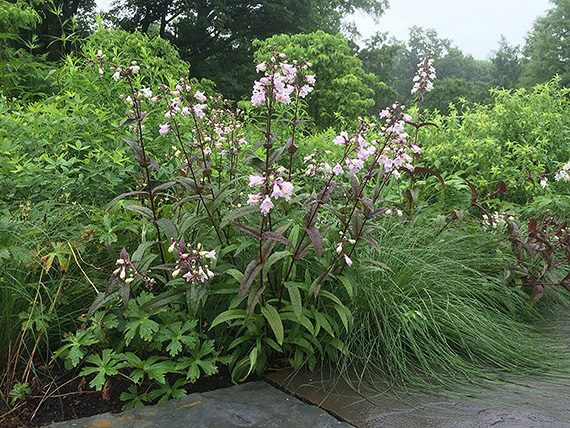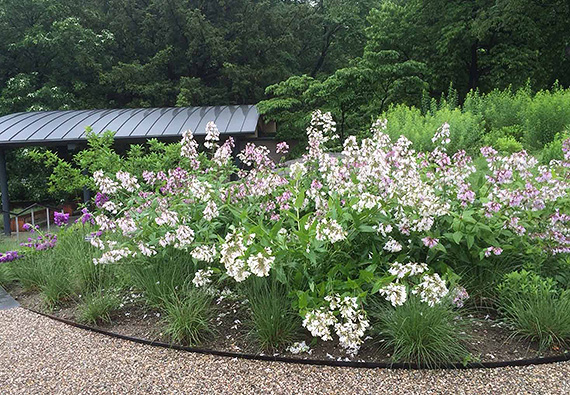Beautiful Beard-tongues
Posted in Horticulture on June 20 2014, by Todd Forrest
Todd Forrest is the NYBG’s Arthur Ross Vice President for Horticulture and Living Collections. He leads all horticulture programs and activities across the Garden’s 250-acre National Historic Landmark landscape, including 50 gardens and plant collections outside and under glass, the old-growth Thain Family Forest, and living exhibitions in the Enid A. Haupt Conservatory.

I am batty for beard-tongues. No, I don’t mean the furry-mouthed feeling that people with actual social lives get after long nights of too many cocktails, I mean the more than 250 species of Penstemon, a genus of perennials and biennials native to North America from the Maine woods to the alpine meadows of Idaho and the deserts of California. With tall clusters of flowers as beautiful as their common name is ugly (the moniker beard-tongue refers to tufts of hair that emerge from the sterile fifth stamen of certain species), beard-tongues carry late spring in the Native Plant Garden.
The most common beard-tongue in cultivation is Penstemon digitalis ‘Husker Red’, selected in 1983 by Dr. Dale Lindgren of the University of Nebraska for its maroon leaves, long-lasting inflorescences of white flowers, and extreme hardiness (it thrives in Nebraska!). We planted ‘Husker Red’ in the Native Border, where its flowers bridge the gap between the peaks of mid-spring and mid-summer bloom, and its foliage adds a dash of welcome color throughout the growing season.
The greatest concentration of beard-tongues in the Native Plant Garden can be found at the edge of the Glade adjacent to the Meadow. Five species of Penstemon (P. digitalis, P. cobaea var. purpurea, P. laevigatus, P. tubaeflorus, and P. calycosus) grow here, their flower clusters rising above tussocks of little bluestem and prairie dropseed to steal the early June show. Of these, my absolute favorite is Penstemon cobaea var. purpurea. Its improbably purple flowers can be more than one inch across—huge by Penstemon standards—and stand on spikes that can reach nearly three feet tall. I am so enamored of this plant that my colleagues in Horticulture have become completely inured to my annual “I WANT MORE PENSTEMON!” rant, which coincides exactly with the peak bloom of P. cobaea var. purpurea.

For all of their ethereal beauty, these beard-tongues are surprisingly tough, albeit short lived. They handle our cold winters and humid summers with aplomb. All you have to do is give them well-drained, not too acidic soil in full sun or light shade and they will give you pleasure that will temporarily ease the pain of even the most memorable evening of debauchery.


